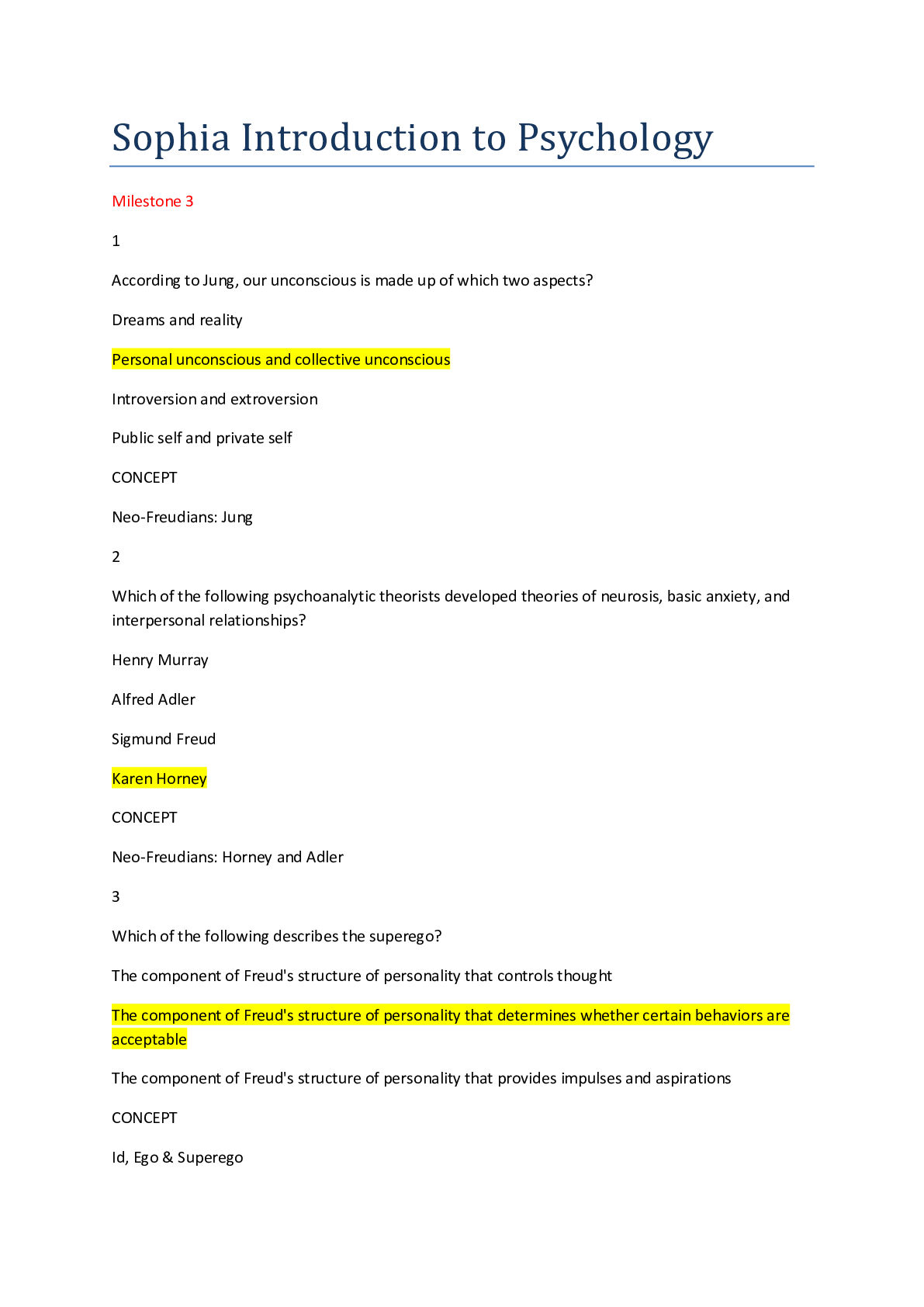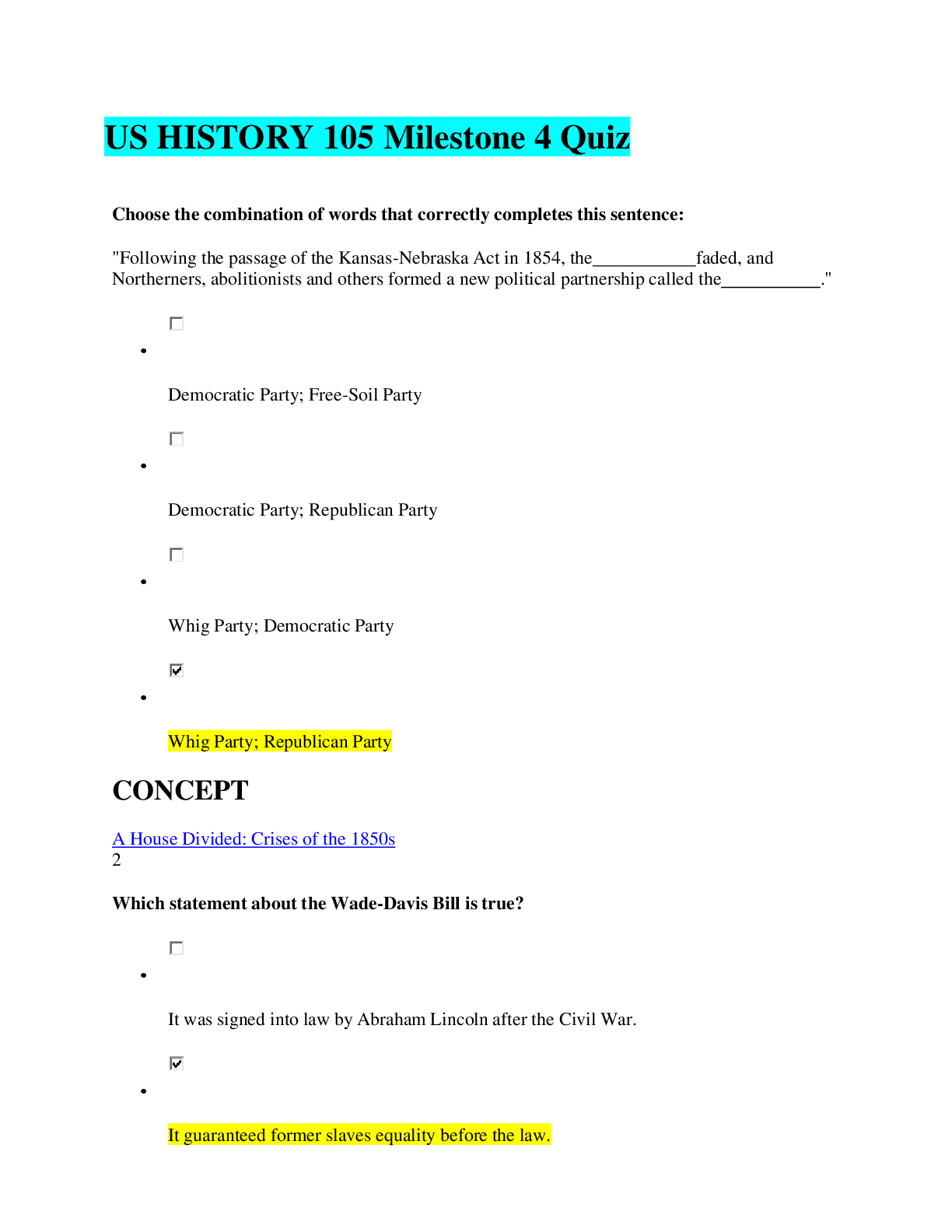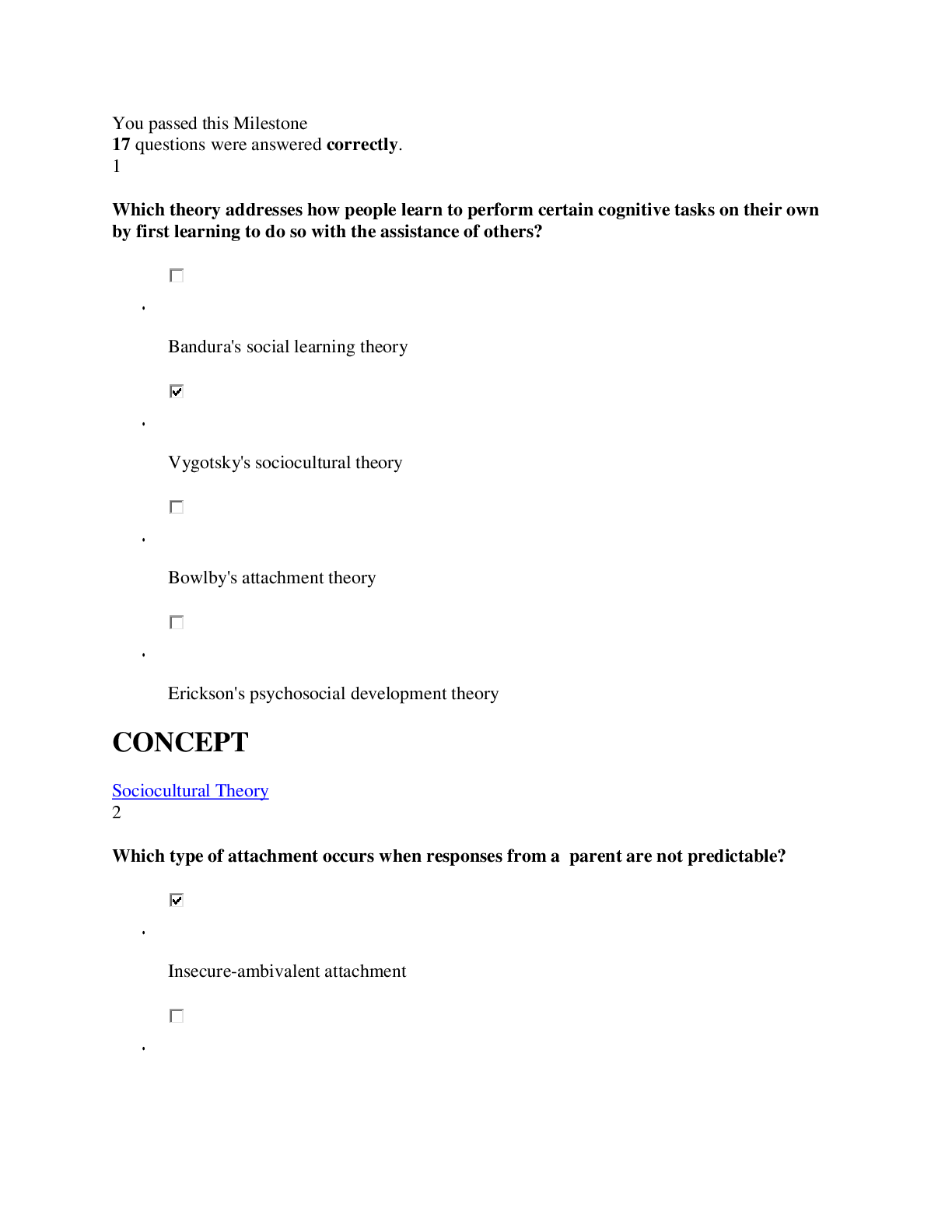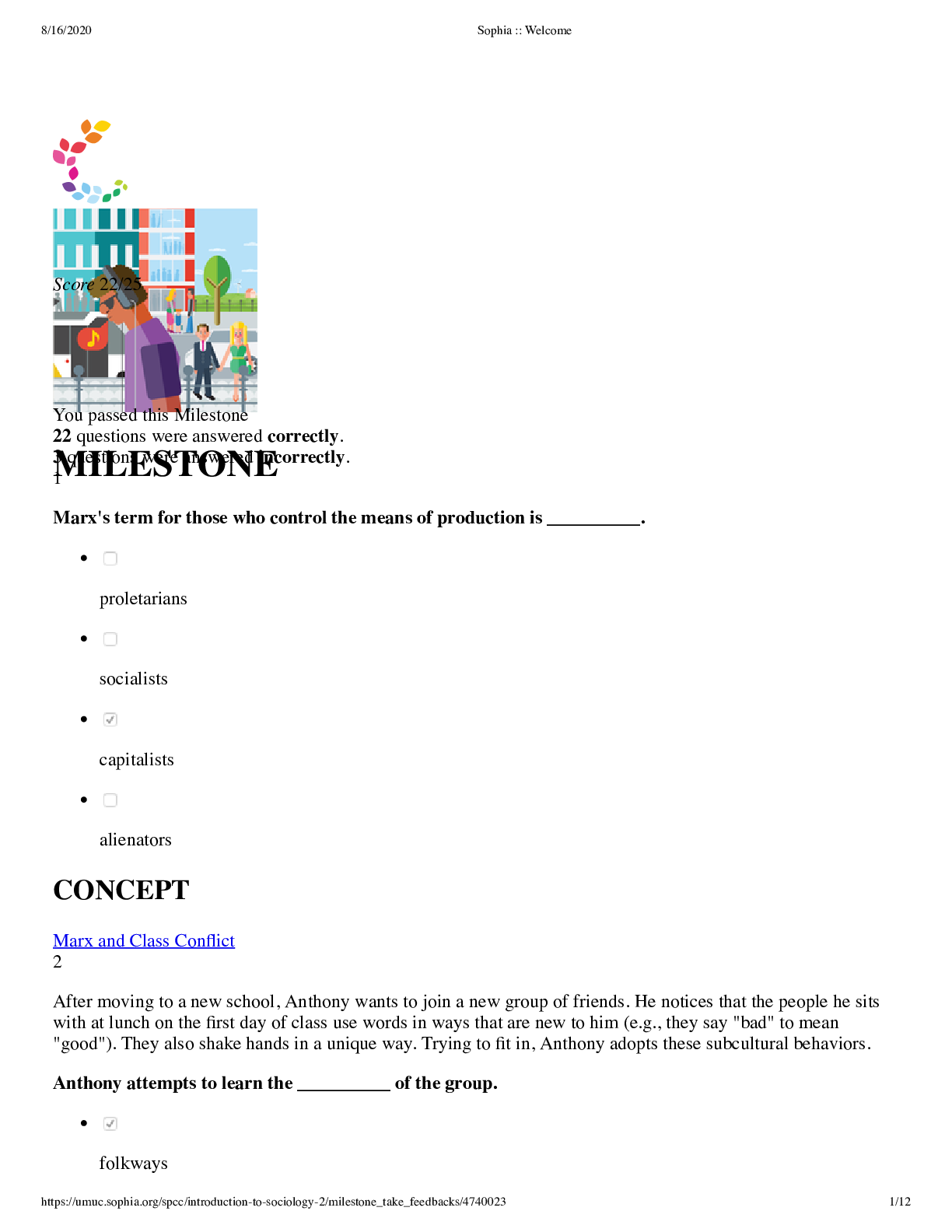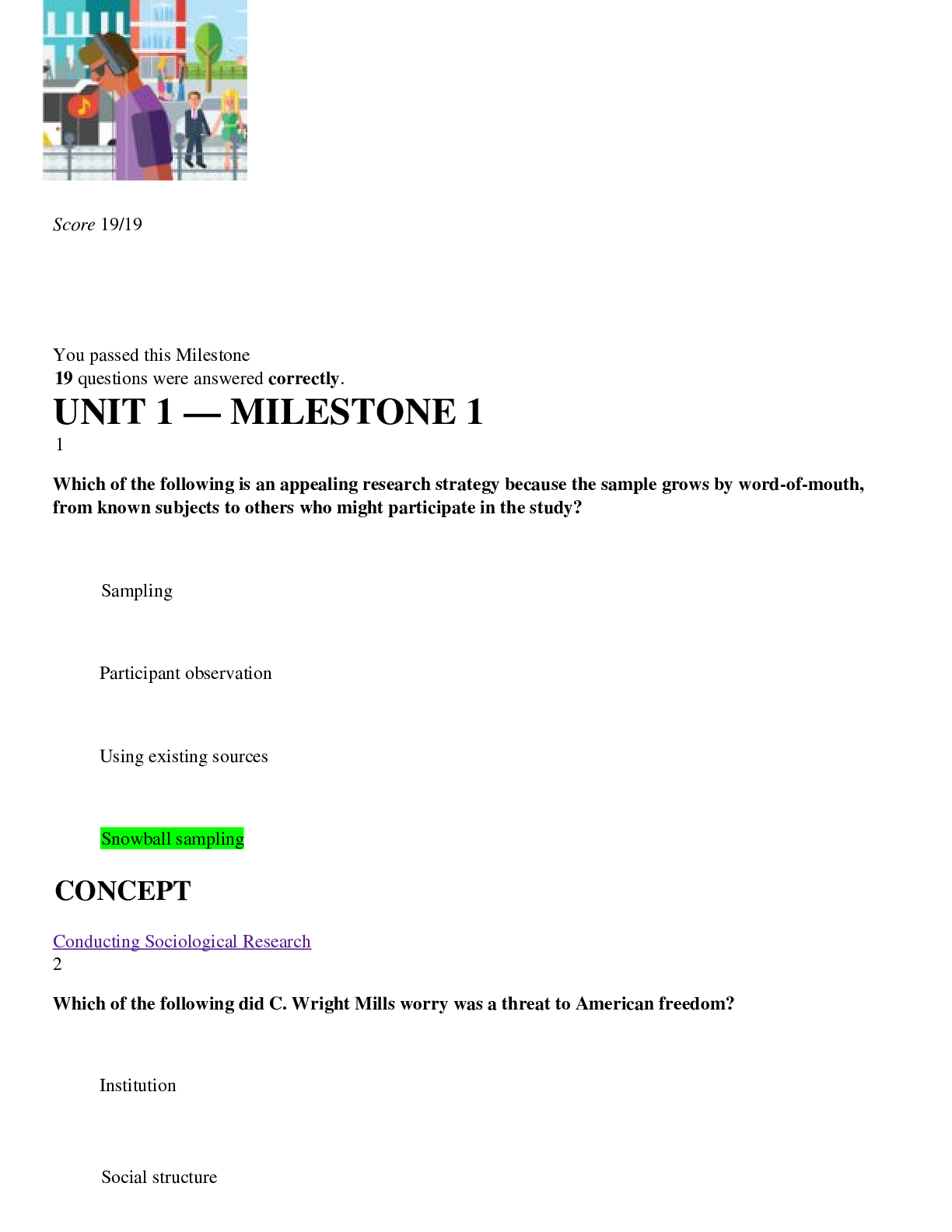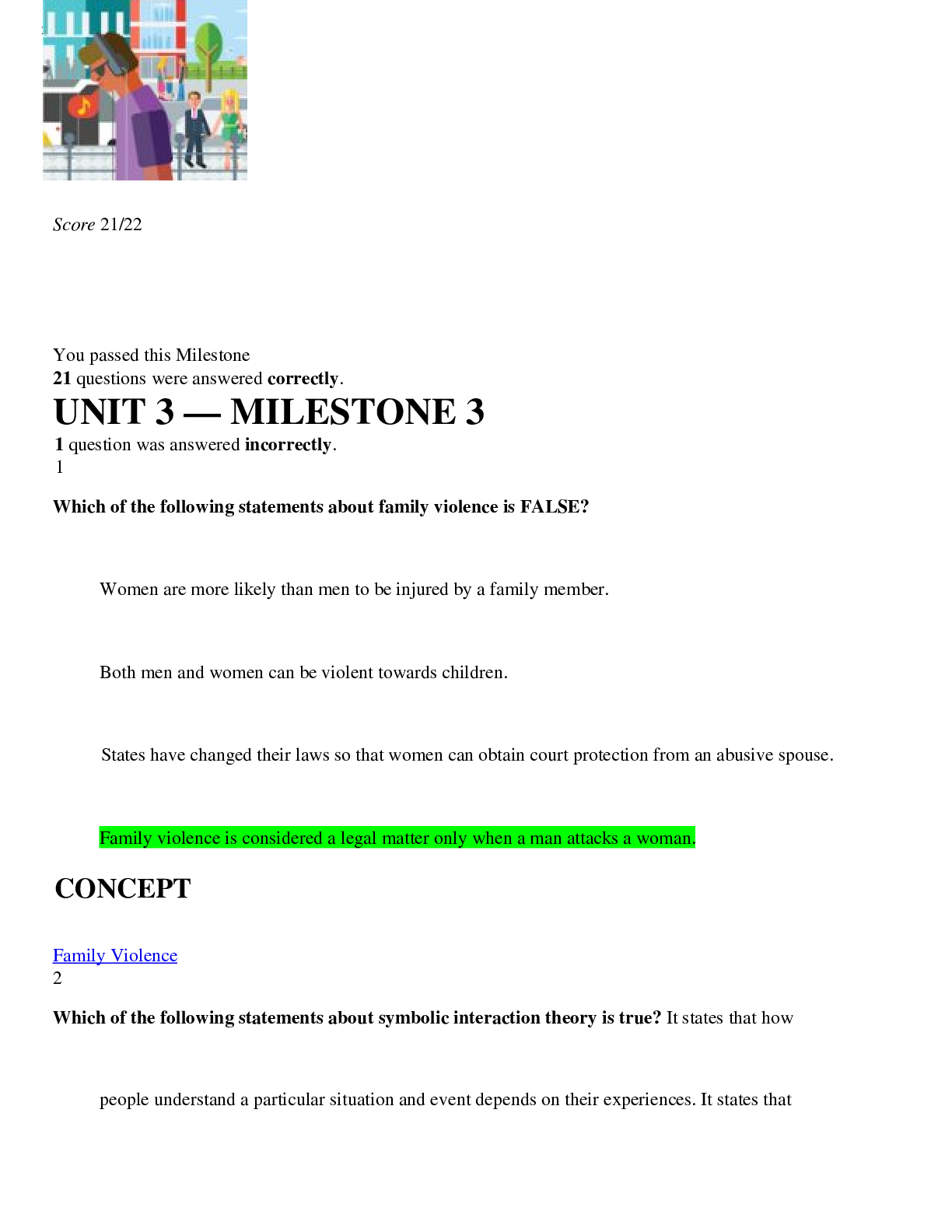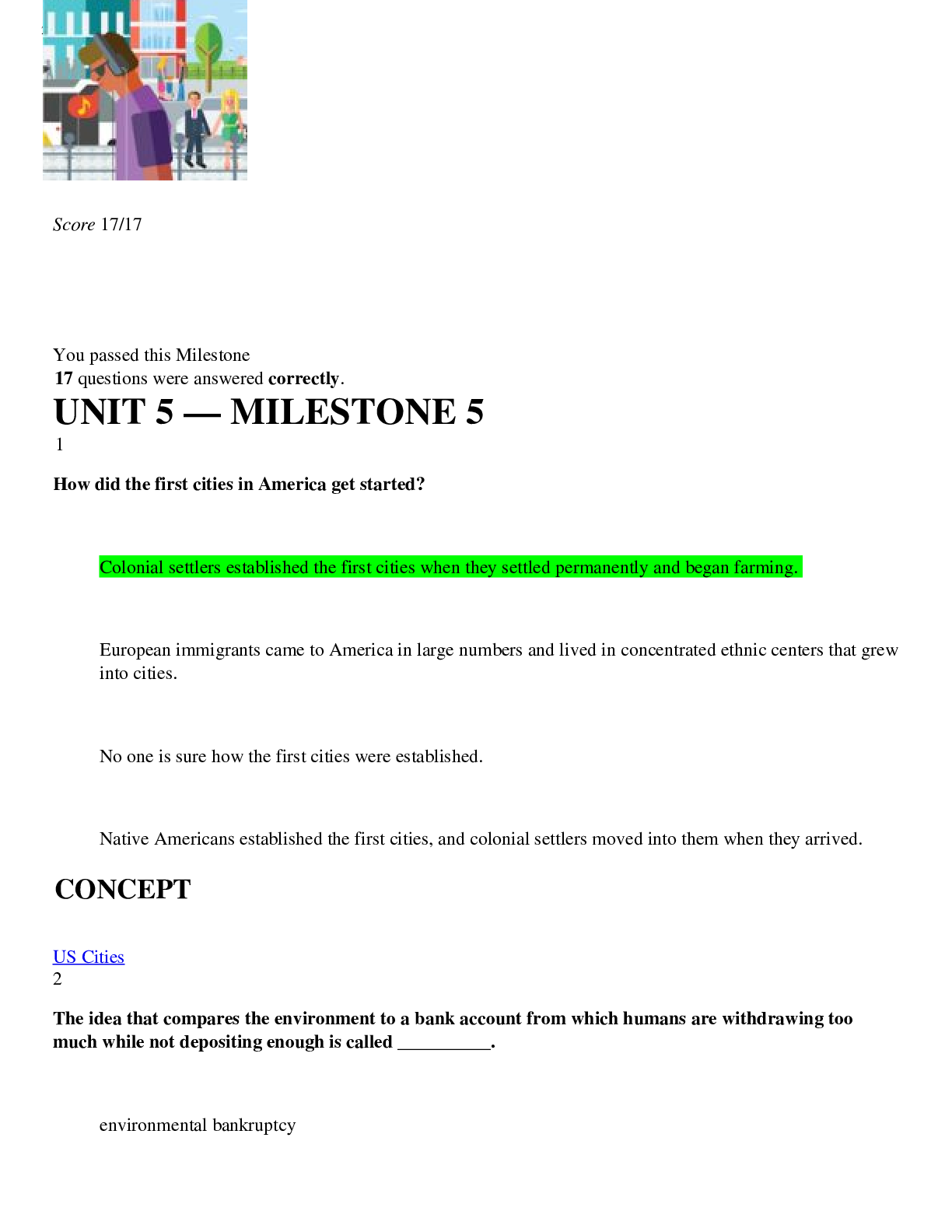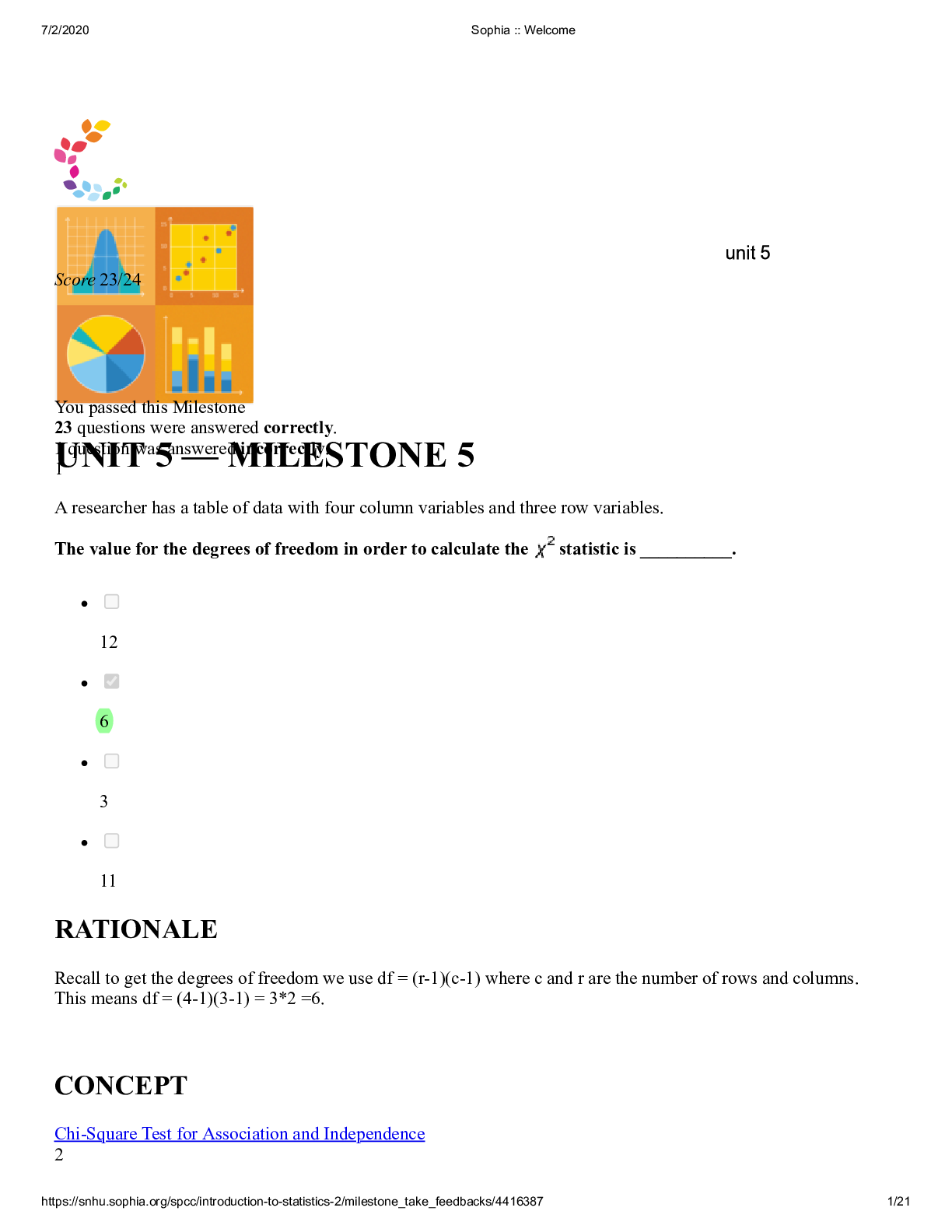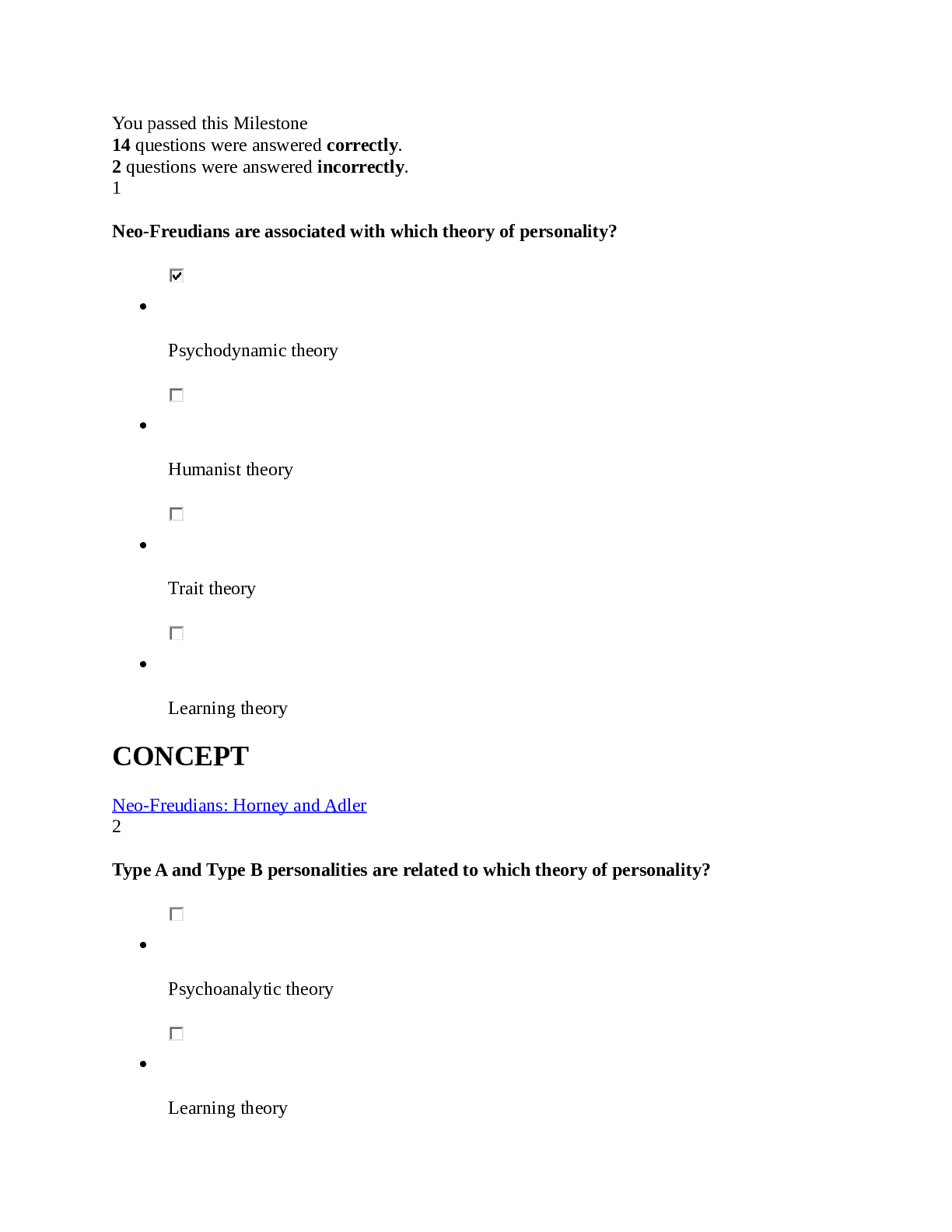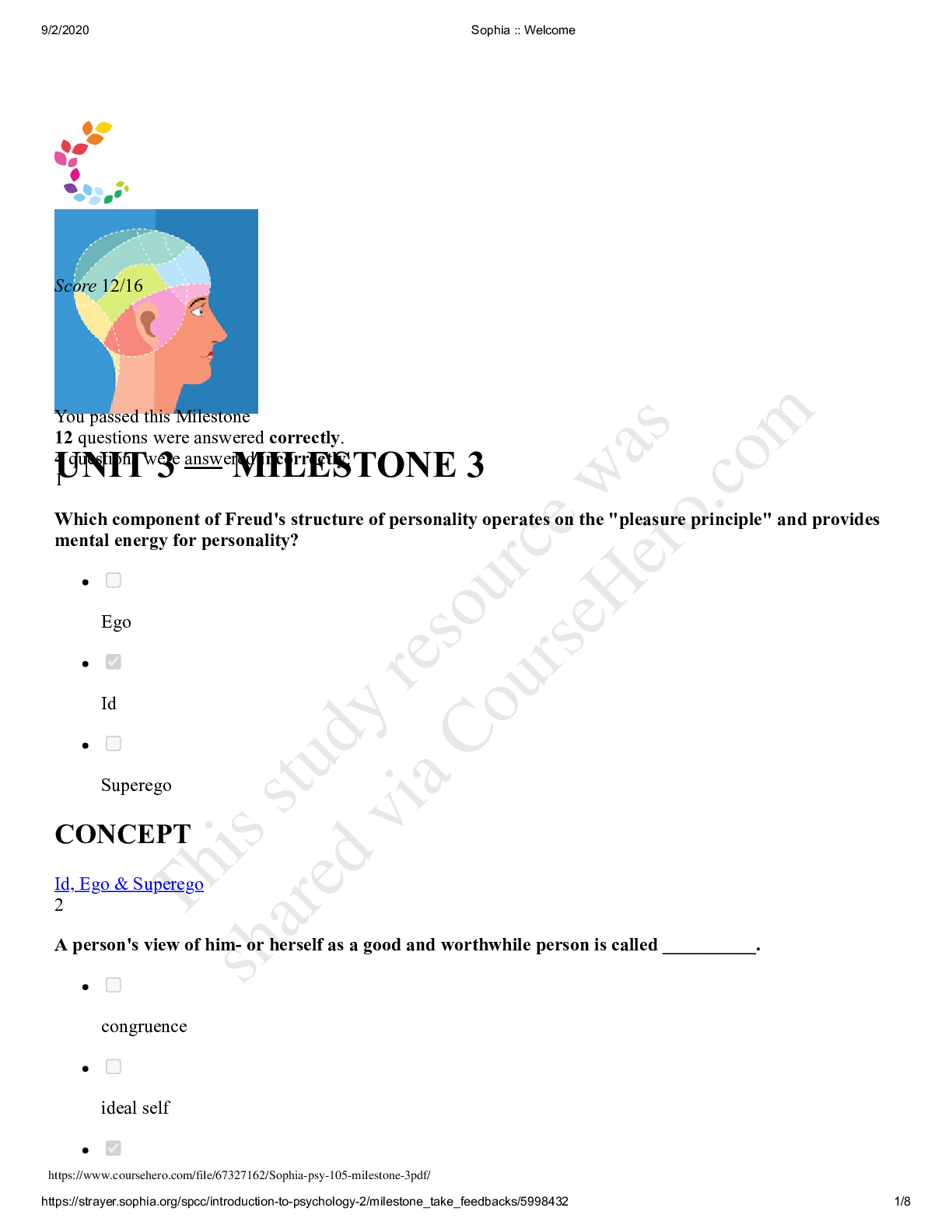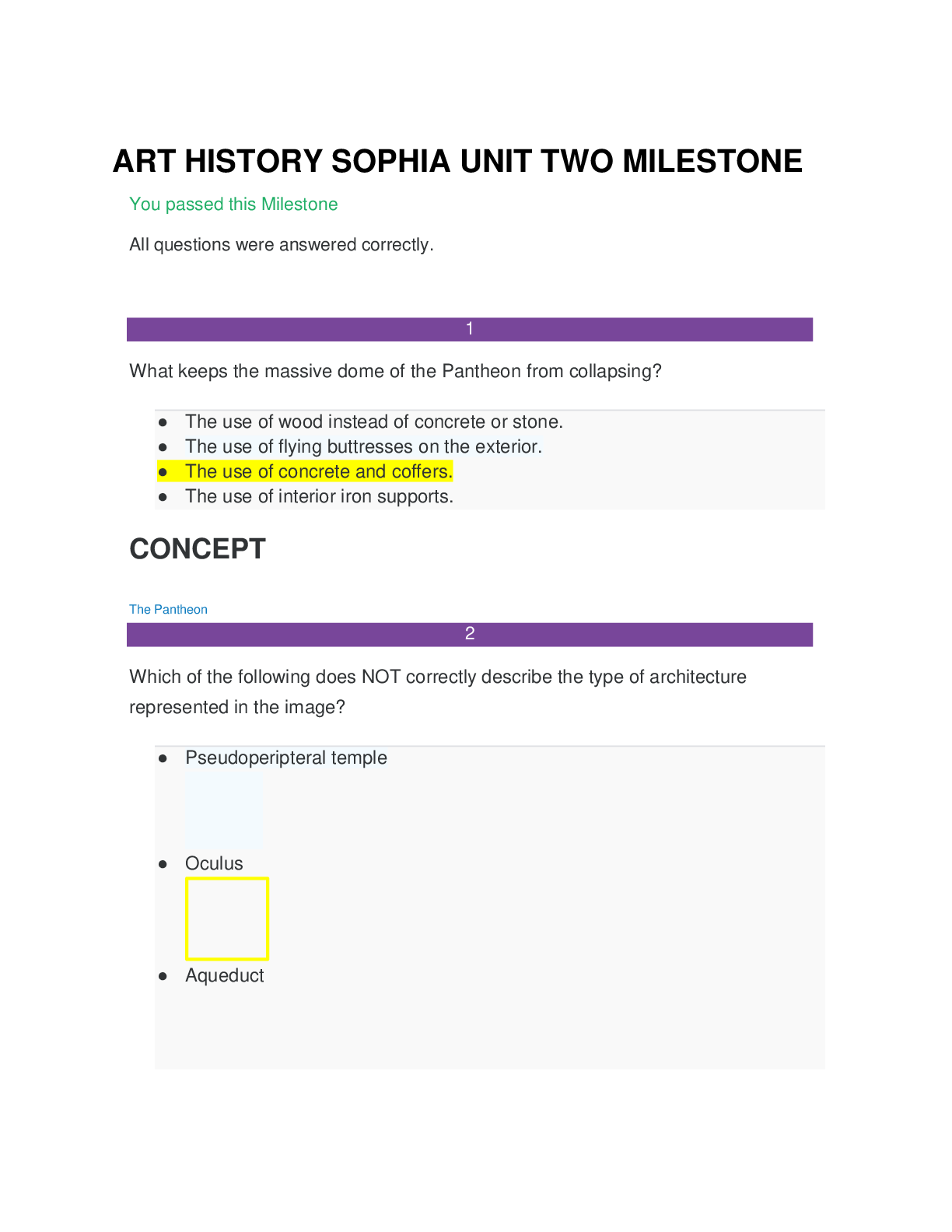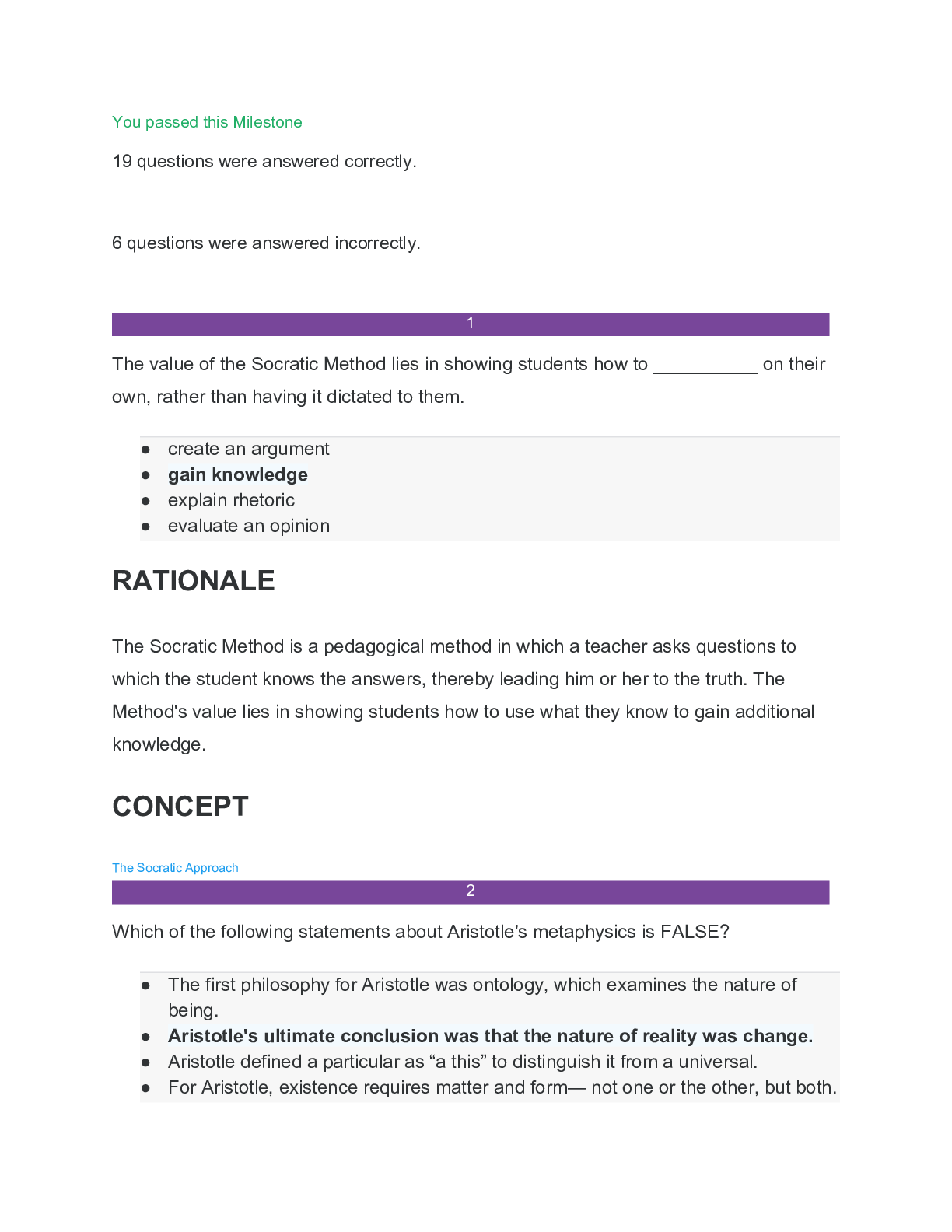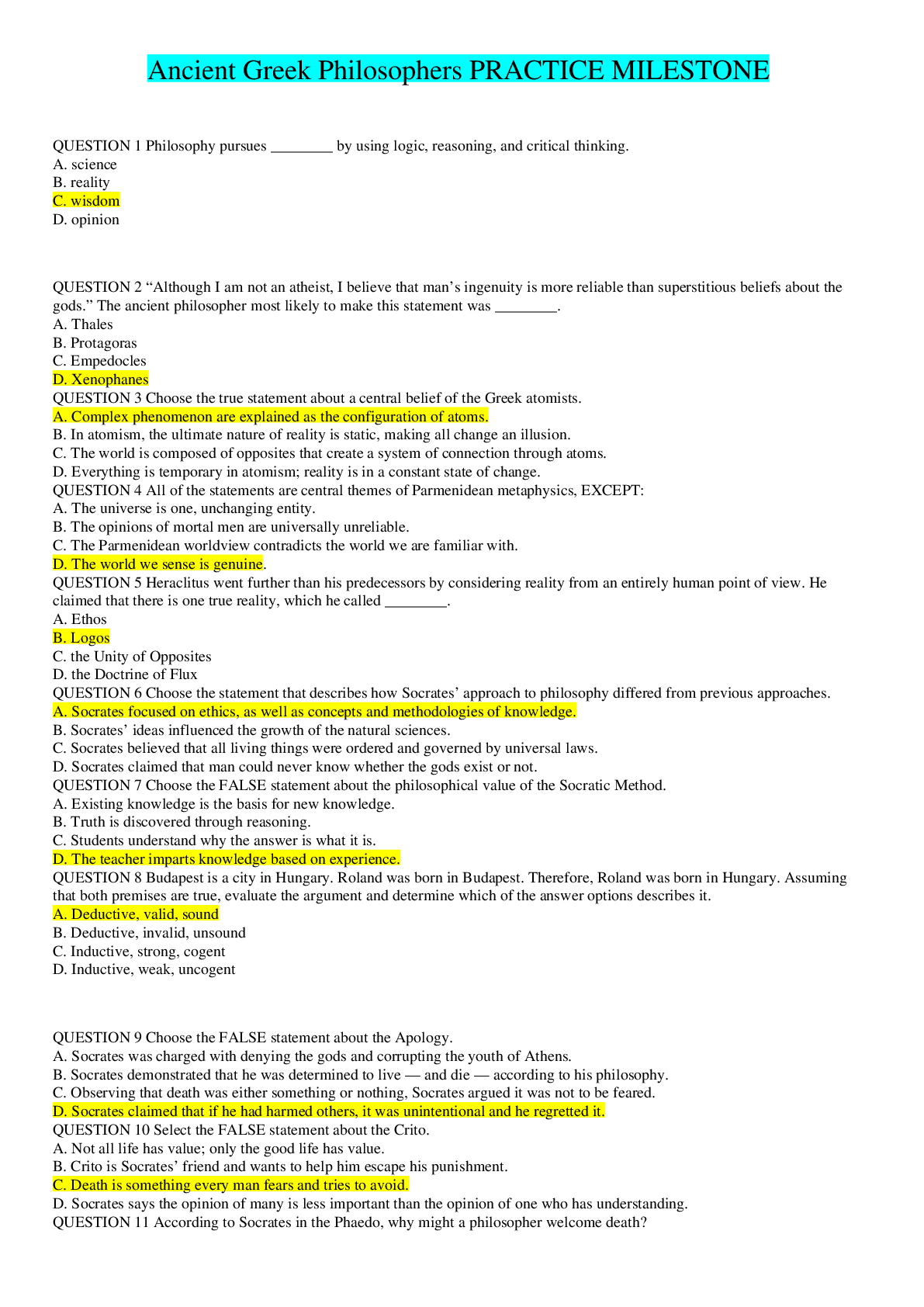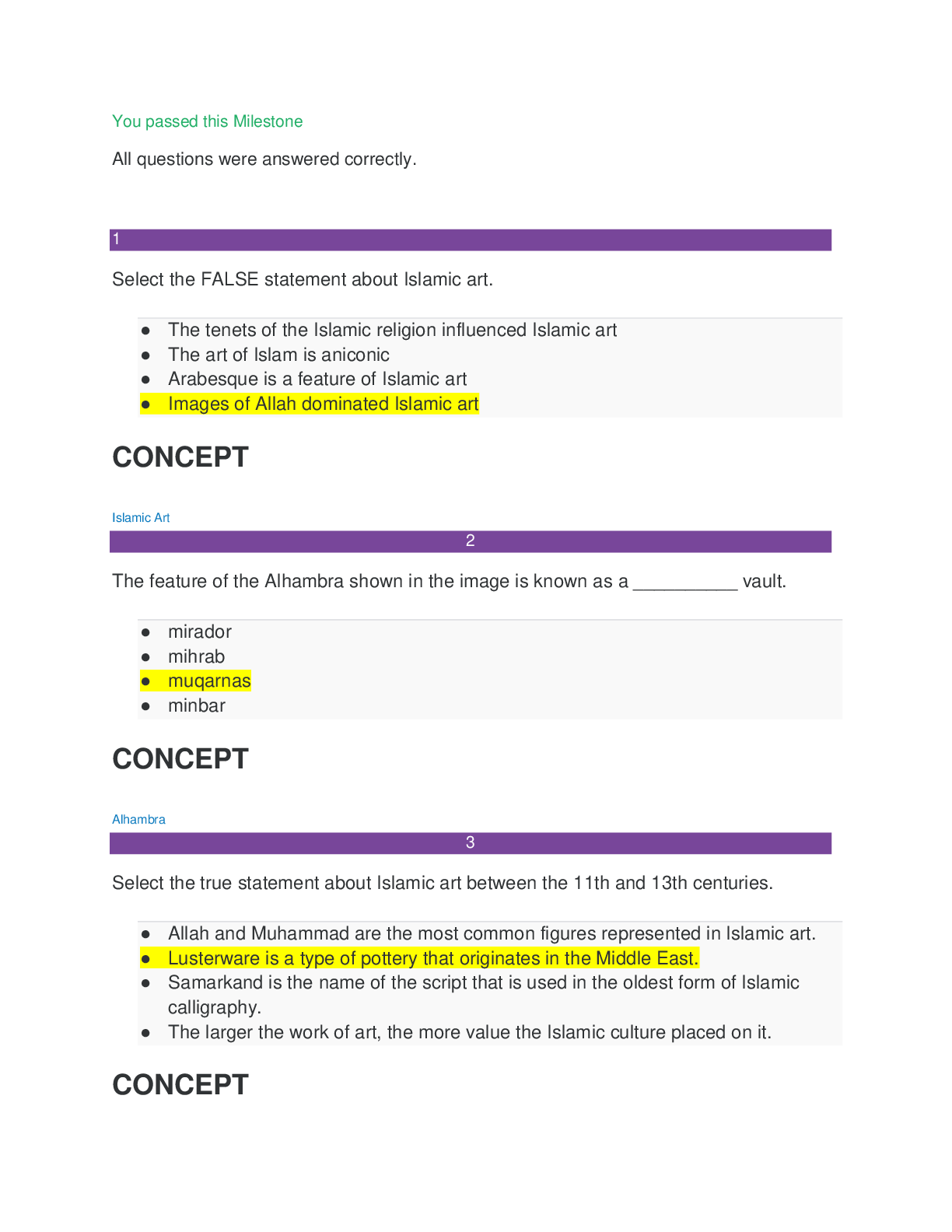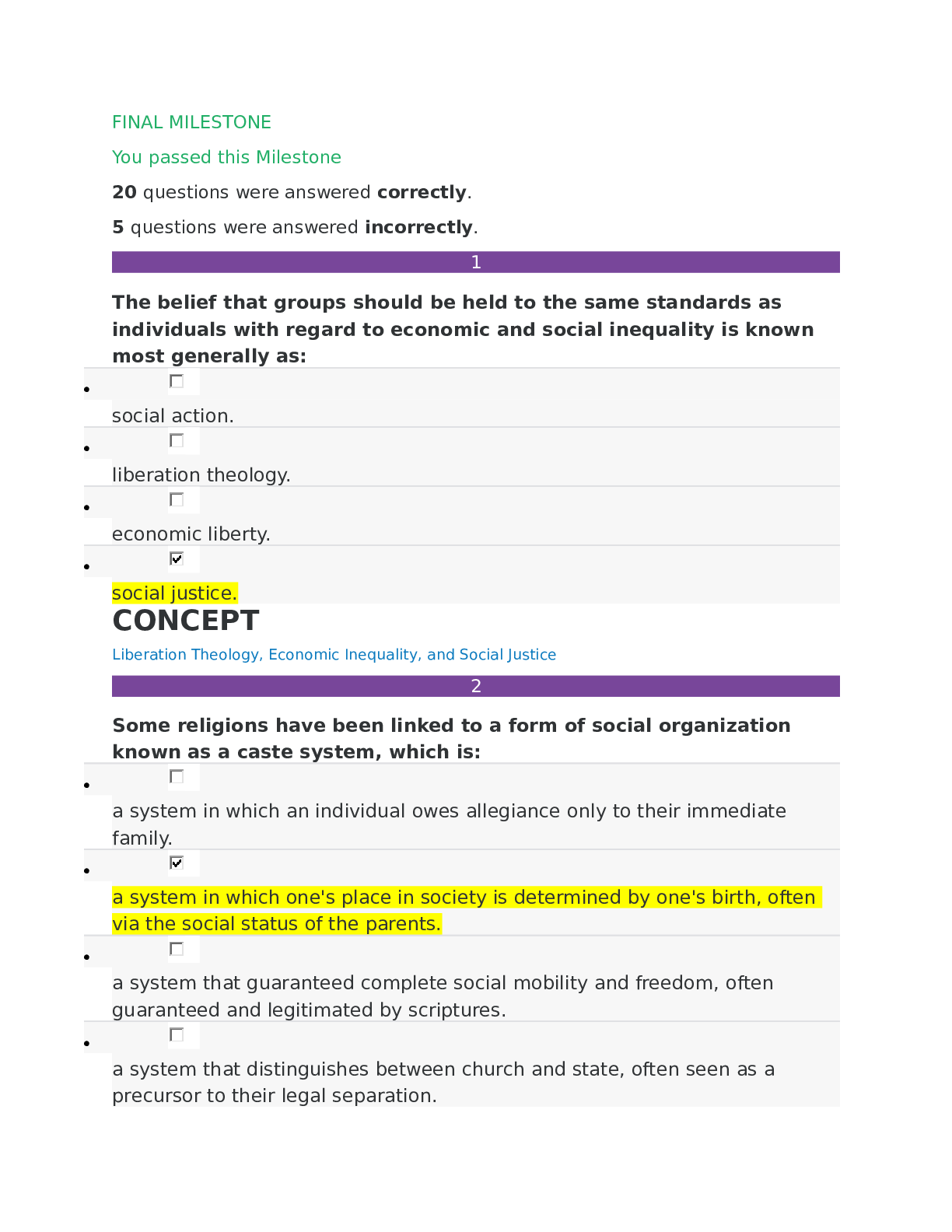Psychology > SOPHIA Milestone > PSYCHOLOGY 108 Intro to Psychology milestone 3 You passed this Milestone 13 questions were answered (All)
PSYCHOLOGY 108 Intro to Psychology milestone 3 You passed this Milestone 13 questions were answered correctly. 3 questions were answered incorrectly.
Document Content and Description Below
PSYCHOLOGY 108 Intro to Psychology milestone 3 You passed this Milestone 13 questions were answered correctly. 3 questions were answered incorrectly. 1 A person's view of him- or herself as a goo... d and worthwhile person is called __________. • congruence • self-actualization • ideal self • positive self-regard CONCEPT Humanism 2 A test’s consistency in producing similar results when given at different times is called __________. • projectivity • validity • stamina • reliability CONCEPT Assessment Types 3 A test that uses ambiguous words or images to uncover unconscious thoughts or desires is called a(n) __________. • personality questionnaire • projective test • behavioral assessment • objective test CONCEPT Specific Personality Assessments 4 Which stage of a child's psychosexual development did Freud describe as a time when the mouth is the main focus of behavior? • Oral • Phallic • Anal • Genital CONCEPT Freud's Psychosexual Stages 5 The Type A / Type B personality theory was developed by which of the following individuals? • Two cardiologists who were investigating heart disease risk • Gordon Allport, in conjunction with his trait theory of personality • Theorists who were investigating the five-factor theory of personality dimensions • Hans Eysneck, in conjunction with his biological theory of personality CONCEPT Type A and Type B Personalities 6 Conscientiousness, openness to experience, and agreeableness are all part of which model of personality? • Five factor model • Neo-Freudian model • Social learning model • Psychoanalytic model CONCEPT Five Factor Model of Personality 7 According to Jung, our unconscious is made up of which two aspects? • Dreams and reality • Public self and private self • Personal unconscious and collective unconscious • Introversion and extroversion CONCEPT Neo-Freudians: Jung 8 The likelihood to view a person as generally positive or negative, based on perceived characteristics, is called which of the following? • Direct observation • The halo effect • Ageism CONCEPT The Basics of Assessments 9 Bill Sr. and his son, Billy, are both shy. Billy often clings to his father's leg in new situations, a habit that Billy’s grandfather said Bill Sr. had as a boy. Bill and his son's similar behavior can be partly explained by __________. • twin behaviors • the five factor model • behavioral genetics • synchronicity CONCEPT Introduction to Personality Theory 10 Which of the following describes the superego? • The component of Freud's structure of personality that provides impulses and aspirations • The component of Freud's structure of personality that determines whether certain behaviors are acceptable • The component of Freud's structure of personality that controls thought CONCEPT Id, Ego & Superego 11 Neo-Freudians are associated with which theory of personality? • Psychodynamic theory • Trait theory • Learning theory • Humanist theory CONCEPT Neo-Freudians: Horney and Adler 12 Something in the environment that influences and encourages a person's action is called __________. • a reward • a stimulus • a cue • a driver CONCEPT Learning Theory 13 Reinforcement value refers to __________. • a person's belief that he or she can perform an action • a person's belief that he or she is a worthwhile person • a person's ability to watch others and learn from them • a person's idea about the worth of a certain action CONCEPT Social Learning Theory 14 Traits that are prominent and influential in a person’s behavior in a range of situations are called __________ traits. • Type A • central • secondary • common CONCEPT Introduction to Trait Theory 15 The defense mechanism of repression is derived from which psychological theory? • Psychoanalytic • Psychosexual • Psychosocial • Psychodynamic CONCEPT Psychoanalytic Theory 16 According to Rogers' self theory, the self-concept includes which three components? • True self, self-image, and ideal self • Self-esteem, positive regard, and conscience • Self-image, ideal self, and congruence • Self-worth, positive regard, and unconditional positive regard CONCEPT [Show More]
Last updated: 1 year ago
Preview 1 out of 4 pages

Reviews( 0 )
Document information
Connected school, study & course
About the document
Uploaded On
Dec 31, 2020
Number of pages
4
Written in
Additional information
This document has been written for:
Uploaded
Dec 31, 2020
Downloads
0
Views
155

